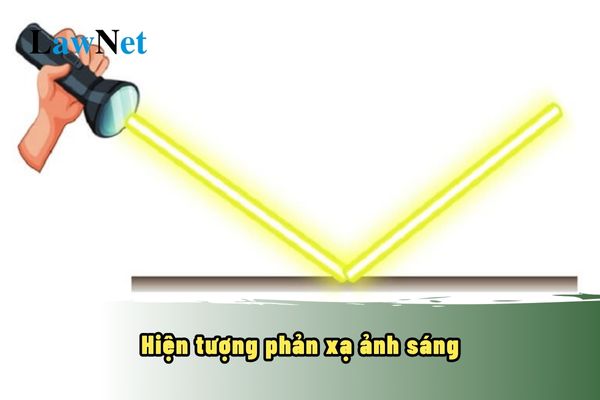What is the phenomenon of light reflection? What is the law of light reflection? What are the characteristics of Physics subject in Vietnam?
What is the phenomenon of light reflection? What is the law of light reflection?
The phenomenon of light reflection is a fundamental optical phenomenon that plays an important role in daily life. Understanding the law of light reflection helps us explain many optical phenomena and apply them in practice.
What is the Phenomenon of Light Reflection? The Law of Light Reflection?
What is the Phenomenon of Light Reflection?
Light reflection is the phenomenon where light, upon encountering a smooth surface (such as a mirror, smooth water surface...), is reflected back to its original environment. This phenomenon is akin to when a ball hits a wall and bounces back.
Example: When we look in a mirror, the image we see is due to light from our body hitting the mirror and being reflected back to our eyes.
The Law of Light Reflection
The law of light reflection describes the relationship between the incident ray and the reflected ray when light encounters a flat surface. This law consists of two main points:
The reflected ray lies in the plane containing the incident ray and the normal at the point of incidence. Explanation: The normal is the line perpendicular to the mirror at the point of incidence. The incident ray, the reflected ray, and the normal all lie on the same plane.
The angle of reflection equals the angle of incidence. Explanation: The angle of incidence is the angle formed by the incident ray and the normal, while the angle of reflection is the angle formed by the reflected ray and the normal. According to the law, these two angles are always equal.
*Note: The information for reference purposes only./.

What is the phenomenon of light reflection? What is the law of light reflection? What are the characteristics of Physics subject in Vietnam? (Image from Internet)
What are the characteristics of Physics subject in Vietnam?
Pursuant to Section 1 of the Physics Education Curriculum issued together with Circular 32/2018/TT-BGDDT, the characteristics of Physics subject in Vietnam are as follows:
Physics is a science that studies the simplest, most general forms of movement of matter and the interactions between them.
In general education, physics education is implemented across three levels with varying degrees.
In the basic education stage (elementary and lower secondary school), physics education is covered in the subjects: Nature and Society (grades 1, 2, 3); Science (grades 4, 5); Natural Science (grades 6 to 9).
In the career-oriented education stage (upper secondary school), Physics is a subject in the Natural Science group, chosen according to the students' preferences and career orientation.
Students with career aspirations requiring extensive knowledge and skills in physics are provided with additional study modules.
The subject of Physics helps students continue to develop the qualities and competencies shaped during the basic education stage, enabling them to initially recognize their abilities and interests, and develop a positive attitude towards the subject.
Based on the foundational content provided in the basic education stage, the Physics Curriculum chooses to develop the most essential and practical issues, simultaneously focusing on highly applicable issues that form the basis of many engineering, science, and technology fields.
Experiments and practical work play a crucial role in forming concepts, rules, and physical laws.
Therefore, the Physics Curriculum emphasizes training students in the ability to explore the properties of physical objects through experimental and practical content from various perspectives.
The Physics Curriculum places importance on developing the ability to apply learned knowledge and skills to explore and address certain practical problems, meeting life demands; ensuring the development of physics competencies - expressions of natural science competencies, while also fulfilling the career orientation requirements of students.
Through the Physics Curriculum, students develop a scientific worldview; cultivate confidence, honesty, objectivity; appreciate the beauty of nature; love, take pride in the natural environment of their homeland and country;
Respect natural laws, value, preserve, and protect nature, and behave with nature in line with sustainable development requirements; while developing the capacities for autonomy and self-directed learning, communication and cooperation, problem-solving, and creativity.
What are current regulations on educational equipment in Vietnam?
Pursuant to Article 41 of the Regulations on lower secondary schools, upper secondary schools, and multi-level schools issued together with Circular 32/2020/TT-BGDDT, the regulations on educational equipment are as follows:
- Lower secondary schools are equipped with educational equipment, organize management, and effectively use educational equipment in teaching and education according to the regulations of the Ministry of Education and Training.
- Teachers are responsible for effectively using the school's educational equipment in teaching and education activities; encouraging teachers and students to create their own teaching tools according to the content and teaching methodology requirements prescribed in the general education curriculum.

